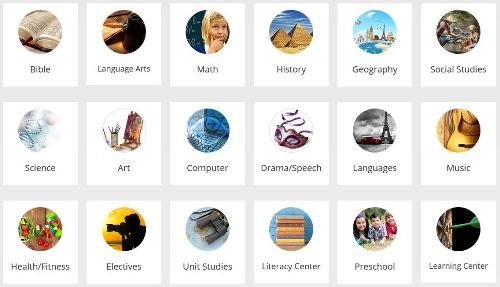Soup’s
on in the Medieval Times Kingdom! Enjoy
a castle favorite, the tomato bisque, and help Dallas LIFE with food donations
Winter's chill is taking hold
of the kingdom this January and February, and what better way to warm up than
with a hot, delicious bowl of soup! Known for their famous tomato bisque, Medieval
Times is partnering with non-profit Dallas LIFE to help those in need create
their own healthy soups by tackling hunger in North Texas with a food drive and
by releasing the bisque recipe for all to make.
To donate, bring any non-perishable food item to the Dallas
castle and receive 45% off adult admission for a Thursday, Sunday or the 2pm
Saturday show through February 12th.
Suggested food items include the makings for soups including tomato
sauce, beans or peas, broths or stocks and canned vegetables.
The
history of soup is as old as the history of cooking. The act of combining various ingredients in a
large pot to create a nutritious, filling, easily digested, simple to
make/serve food was inevitable. This made it the perfect choice for both
sedentary and travelling cultures, rich and poor, healthy people and invalids.
Soup (and stews, pottages, porridges, gruels, etc.) evolved as dictated by
local ingredients and tastes. There was no
tableware, so soup was drunk right out of the bowl, as was any type of stew.
Soups are a great option nutritionally, they provide us with
lots of important nutrients including vitamins and minerals for relatively few
calories. Soup can be a simple addition to any meal and a great way to make
sure that you and your family get the essential servings of whole grains,
vegetables and protein in one bowl.
“There is no secret to creating an amazing soup,” said Frank
Dameron, Director of Food Services at Medieval Times. “It’s all about the
ingredients. The best herbs and fresh produce will help keep even the coldest
Dallas/Fort Worth winter days at bay.”
MEDIEVAL
TIMES TOMATO BISQUE (home version)
2 tbls. canola oil
2 ea. medium
carrots, peeled
1 ea. celery stalk, cleaned and trimmed
½ ea. medium onion, peeled
1 tsp. garlic, minced
2 ea. 6 oz. cans tomato paste
1 ea. 15 1/2 oz can tomato puree
5 cups water
1 tsp. paprika
3 tbls. sugar
2 tsp. salt
¼ tsp. fresh ground pepper
Pinch Italian seasoning
½ ea. lemon, for juice
- Cut the
carrots, celery and onion into small pieces about ½ inches. Place the
carrots, onions and celery into a food processor fitted with the knife
blade and pulse until they are finely minced, almost pureed.
- Heat the
canola oil in a 5 – 6 quart stainless steel sauce pan or pot. Add the
finely minced carrots, onions and celery and cook until vegetables are
soft but not browned, about 5 to 7 minutes.
- Add the
minced garlic and continue to cook for another 2 minutes.
- Add the
tomato paste and stir into the vegetables to combine well and cook for
another 2 minutes.
- Add the
tomato puree, water, paprika sugar, salt, ground pepper, Italian Seasoning
and juice from ½ lemon.
- Bring soup
to a boil while stirring frequently. Once soup comes to a boil, reduce
heat to a simmer and continue to simmer for 20 minutes, while stirring
frequently to prevent soup from scorching.
- When soup is
finished cooking, remove from heat, taste and adjust seasoning if
necessary. Serve immediately.
ABOUT MEDIEVAL TIMES
The
pageantry and thrills of an authentic jousting come to life inside Medieval
Times Dinner & Tournament. Based
upon the true story of a noble family with documentation dating back to the 11th
century Spain, the walls of King Don Carlos’ castle come to life when six
armor-clad knights on valiant horses seek the title of champion.
While
witnessing almost two hours of jousting, swordsmanship, thrilling hand-to-hand
combat, displays of extraordinary horsemanship and falconry, dine with King Don
Carlos and his royal court during a four-course meal which includes garlic
bread, tomato bisque soup, roasted chicken, sweet buttered corn, herb-basted
potatoes, the pastry of the Castle and select beverages. Vegetarian meals and special allergy
accommodations are available upon request.
Medieval
Times began with two dinner/entertainment complexes located in Majorca and
Benidorm, Spain, and have since grown to nine locations in North America. The
first North American castle in Kissimmee, Florida opened in December 1983. The
Dallas castle, located off Stemmons Freeway in the Dallas Design District,
opened in June of 1992.
2021 North Stemmons Freeway
Dallas, TX 75207
1-888-WE-JOUST (935-6878)
ABOUT DALLAS LIFE
Dallas LIFE reaches out to homeless men, women and children
with food, clothing, shelter, education - and a proven path to recovery and
self-sufficiency. It is the largest
homeless shelter in North Texas, housing up to 500 people per night.
Dallas LIFE welcomes the needy. Whether it is a homeless man, a single
mother with children, or an entire family, Dallas LIFE is a safe place to
recover from the trauma of homelessness. Some come
beaten and bruised; others addicted and confused. All need a fresh start and a
loving hand-up. At Dallas LIFE, these needs are met every day! For more information, visit DallasLIFE.org.
Disclaimer: This is a sponsored post by Medieval Times.












































































